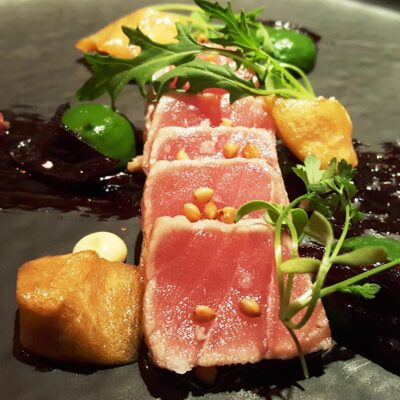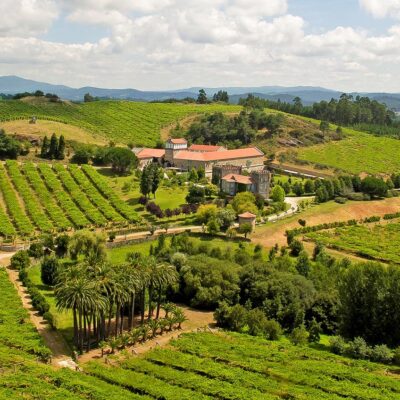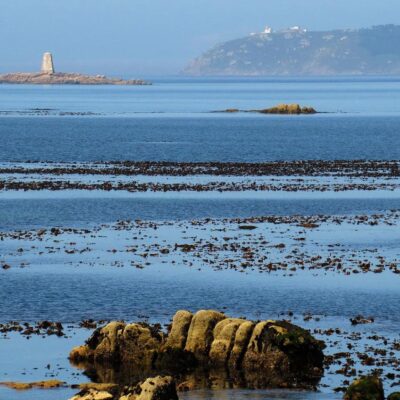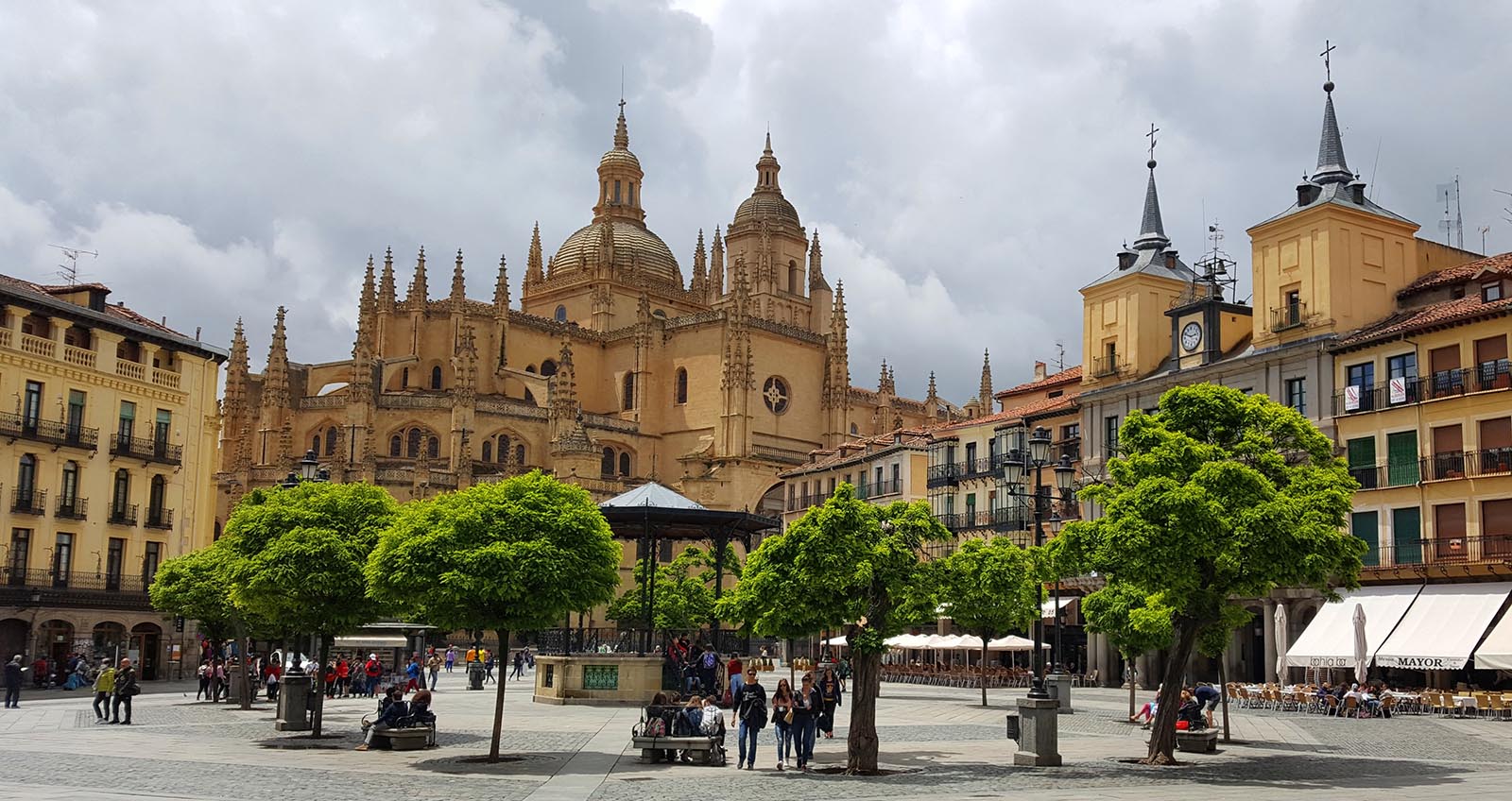Tour Highlights
- Visit world-renowned and boutique wineries lining the banks of the river Duero / Douro
- Enjoy tasting great wines in evocative places, as guest of these wine estates in Spain / Portugal
- Enjoy the beautiful and unspoiled countryside of Castilla y Leon and Alto Douro, seamlessly combining Spain with Portugal
- Savour both innovative as well as family-style Portuguese and Castilian cuisine
- Explore the beguiling townscapes of Segovia and Zamora, outstanding reminders of the kingdom of Castile
- Taste delicious sheep’s milk cheese at an artisanal Castilian cheese maker
- Explore 3 stunning UNESCO World Heritage Sites: Segovia, Douro & Porto
- Sojourn at exclusive hotels – on wine estates, and in historic city centres
Inclusions & Pricing
Availability:
This is a bespoke wine tour, available throughout the year. The itinerary has been designed to commence on a Saturday. Minimum number of guests is two. Our itinerary can be altered to suit your flight schedule and duration desired. To check availability for specific dates, please get in touch.
Pricing:
The price for 8 days (7 nights) wine tour: Euro 1975,- per person sharing a double room.
Inclusions:
- 1 night accommodation exclusive 5 star boutique hotel Segovia
- 1 night accommodation exclusive 5 star boutique hotel Ribera del Duero
- 2 night’s accommodation excusive 4 star boutique hotel Zamora
- 2 night’s accommodation exclusive winery / hotel Douro
- 1 night accommodation exclusive 5 star boutique hotel Porto
- 7 breakfasts
- 1 restaurant dinner Segovia – including wines and soft drinks
- 1 restaurant dinner Zamora – including wines and soft drinks
- 1 restaurant dinner Douro winery – including wines and soft drinks
- 1 restaurant dinner Porto – tasting menu including wines and soft drinks
- 1 tour & tasting at a Ribera del Duero winery, followed by chef’s tasting lunch menu – including wines and soft drinks
- 1 tour & tasting at a Rueda winery, followed by tapas style lunch – including wines and soft drinks
- 1 tour & tasting at a Toro winery, followed by tapas style lunch – including wines and soft drinks
- 1 tour & tasting at a Douro Valley winery, followed by Chef’s lunch menu – including wines and soft drinks
Not included:
- Air fare
- Travel insurance
- Car rental & chauffeur services
- NB: Upon request we can add airport transfers and / or a personal driver service for your visit to the wine country.
Overview
Central Spain: Castilla y Leon
The Castilla y León province, north of Madrid is considered the heartland of Spain. During the 15th century the rulers of Castilla y León were the driving force for the unification with other regions, as a result Spain was created as a single political entity.
Castilla y León lies on a plateau (meseta) accentuated by forested hills, at 700-1000m above sea level. It’s surrounded by high mountains in the north with the lower land given over to growing wheat, olives, and grapes. Here one finds top wine regions like Toro, Rueda and Ribera del Duero. In particular Ribera del Duero is considered one the worlds classic red wine regions. The Duero River runs across Castilla y León and continues into Portugal. In Spain the Duero provides picturesque scenery, whilst downstream, across the border in Portugal, the landscape evolves into the grand Douro Valley wine region.
Castilla is named for is huge number of castles, mostly found close the Duero river. There are magnificent historic cities like Valladolid and Burgos – both former capital cities – as well as Zamora and Segovia. There is a wealth of notable small towns like Penafiel and Tordesillas. These places are rich in art and architecture, reminding us of the glory days of old Castilia.
The regional Castilian cuisine relies firmly on roasted meats. The main roles are for the suckling pig cochinillo, and the lamb lechazo throughout most of Ribera del Duero. Cured hams, spicy sausages and a diverse set of cheese varieties are excellent. Classic eateries offer rustic breads, bean dishes and hearty soups or stews given extra flavour by local embutidos (cured meats). There is innovation too, with modern chefs giving traditional recipes a new twist. Always there are good wines, we are in prime wine country here.
Segovia
Segovia in Castilla y León is one the most alluring cities in all of Spain. We feel this is a real gem, jam-packed with charming medieval streets. The setting against mountain peaks is quite stunning.
The elegant late gothic cathedral, almost renaissance in its use of internal space is quite something as is the most unusual Alcazar. This was a town with an important Jewish community; many historic buildings are testament to that heritage. Then outside the city walls, a short taxi ride away, is the sumptuous La Granja palace, built by the 1st Bourbon king of French descent, surrounded by magnificent gardens and mountains – Versailles eat your heart out.
Last but not least, the town is famous too for its rustic Castilian cuisine, served with excellent Ribera del Duero wines.
Ribera del Duero
The Ribera del Duero wine region is Spain’s most renowned wine region, together with Rioja. The high quality of the predominantly red wines the region produces has been widely recognised internationally: Ribera del Duero has an enviable reputation as a producer of extraordinary red wines.
Wine has been made here since Roman times, peaking in the late middle ages when Monastic orders dominated viticulture. Monasteries provided accommodation and food and drink to pilgrims on the way to Santiago de Compostela. Today, just like in the past, Tempranillo is the predominant grape variety. Tempranillo wines tend to be bold and strong, with high alcohol, and assertive flavours of dark cherry and black berries. Usually they have great aging potential. The most common white grape variety is called Albillo Mayor. Only now, guided by expert and adventurous winemakers are albillo monovarietal wines getting some attention.
Few food and wine pairings can top a delicious Ribera del Duero red and the local signature dish: suckling lamb (lechazo). The origins of the dining on lamb tradition can be traced back to the 12th century, when Jewish people, escaping the Moorish occupation down South, fled north to the Christian kingdoms. With them came the Passover lamb that, following Jewish traditions, it is still eaten at local assadores restaurants, often with a salad.
Rueda, Toro and Zamora
Following the undulating Duero river downstream along vast Castile, the Duero and its tributaries reach its shallowest form in the direction of the Portuguese border. Historical towns like Valladolid, Tordesillas and Zamora were settled here on the banks of the Duero river. The wine regions between Zamora and Valladolid have long history of viticulture dating back to medieval times. The small Cigales region has been making a comeback with its ‘’rosado’’ (rosé), no longer an afterthought for winemakers. However Toro and Rueda are those regions which have deservedly become internationally famous.
Scenic Rueda, tucked into a landscape of castes and medieval towns, is now one Spain’s most important white wine regions. Today wines made with the Verdejo grape are fresh and aromatic, with herby citrus notes that sometimes bring a classy Sauvignon Blanc to mind.
The Toro wine region along the Duero river has evolved into a red wine power player. Here dense and potent but still elegant reds are produced with the local Tinta de Toro grape, a clone of tempranillo. The best wine grapes are cultivated in stony gravel vineyards. Star winemakers of French origin made a splash here, like the Lurton brothers and Michel Rolland. Famous Spanish brands like Vega Sicilia are also active in this region of muscular wines.
The last town before the Duero river enters Portugal and becomes the Douro is Zamora. We feel it’s an outstanding and charming reminder of the glory days of old Castile. Zamora is unspoiled and beautiful, offering a spectacular medieval core and the old fashioned atmosphere of a typical Castilian town away from the crowds. Walking the lovely streets and squares is delightful. The hilltop cathedral is a gem, with remarkable Hispanic medieval art inside. A cathedral museum with stunning Flemish tapestries adds to the delights. However, the place is not stuck in time. Once the sun sets the old town gets very lively when the town’s residents come out for evening strolls in the squares and streets.
Close to the town the famous Zamorano cheese is produced. This is a hard raw sheep’s milk cheese made close Zamora, with a yellow colour and crumbly texture. This sweet and savoury cheese is commonly served as a tapa with white or red wine. Included in our tour is a visit to a top local producer.
Douro Valley
As one drives west towards Portugal, the landscape becomes increasingly rugged. The Duero becomes the Douro, flowing through an impressive barren gorge. But then, once you reach Barca de Alva, the first Portuguese town after Spanish border, the landscape becomes softer again, more domesticated. The river seems to slow down, dramatic cliffs are being replaced by steep river banks dotted with olive groves and vineyards. This is Douro Superior, one of the three sub-regions of the fabled Douro Valley wine region. It offers a tapestry of rare natural beauty, arguably one of the most beautiful wine landscapes in the world – deservedly part of the UNESCO World Heritage network.
Just like in Spain, Romans were the first to plant grapes in the Douro Valley. However, only in the 17th century wine production came into its own, following frequent wars between England and France. As a result English merchants were encouraged to procure wines away from France, with Douro’s fortified port wine a major beneficiary. Whilst Douro is indeed historically famous as the producer of port wines, for the last 15 years some of Europe’s best unfortified table wines have also been made here. The best wine estates make both port and table wines and, in a few instances, the estate owners take their table wines more seriously than their port wines.
The most sought-after vineyards are the older ones. Tradition has taught the farmers that only by planting different grape varieties in a ‘’field blend’’, the special complexity of the best Douro wines be achieved. It is common to find many grape varieties in the same plot: Touriga Nacional, Tinta Roriz (known as Tempranillo in Spain), Touriga Franca, Tinta Barroca, Bastardo, Mourisco tinto, and Tinta Amarela. There is a real air of excitement in the Douro valley about its extraordinary terrain’s ability to express itself in such a diverse range of wines. Various French winemakers have been moving in, buying vineyards or setting up joint ventures with local estates. Leading wine magazines like Decanter and Wine Spectator have given high marks to various Douro wines. And matters green like organic wine and sustainability have been becoming increasingly important.
Porto
Our wine tour ends in the handsome old city of Porto, set on the banks of the Douro River. Here in Porto the 900km journey of the Douro (Duero in Spain) comes to an end. There is much to see in this charming city; a large UNESCO heritage listed historic center is largely intact. Well executed renovations have brought downtown back to life, inviting both local and tourist alike to take advantage of the many nooks “recantos” Porto has to offer. Viewpoints with stunning vistas and relaxing esplanades are also aplenty.
The city, adorned with some grandiose baroque monuments and outstanding art galleries like the Serralves museum, offers striking modern architecture as well – star architect Rem Koolhaas’ stunning concert hall Casa de Música is a case in point. For centuries, Porto has been the center of the port wine trade; historic port lodges abound in the Gaia district of the city, where one can enjoy tasting port wines in various styles.
As in any good wine growing culture, excellent food is also prevalent in Douro and Porto. Classic seafood dishes such as polvo a lagareiro (octopus with baked potatoes), seabass with asparagus, John Dory with tomato rice, or meat dishes like succulent roast kid and slow cooked porco Bísaro (pork from pigs fed only on chestnuts) served with grilled forest mushrooms, are being revisited with originality and finesse.
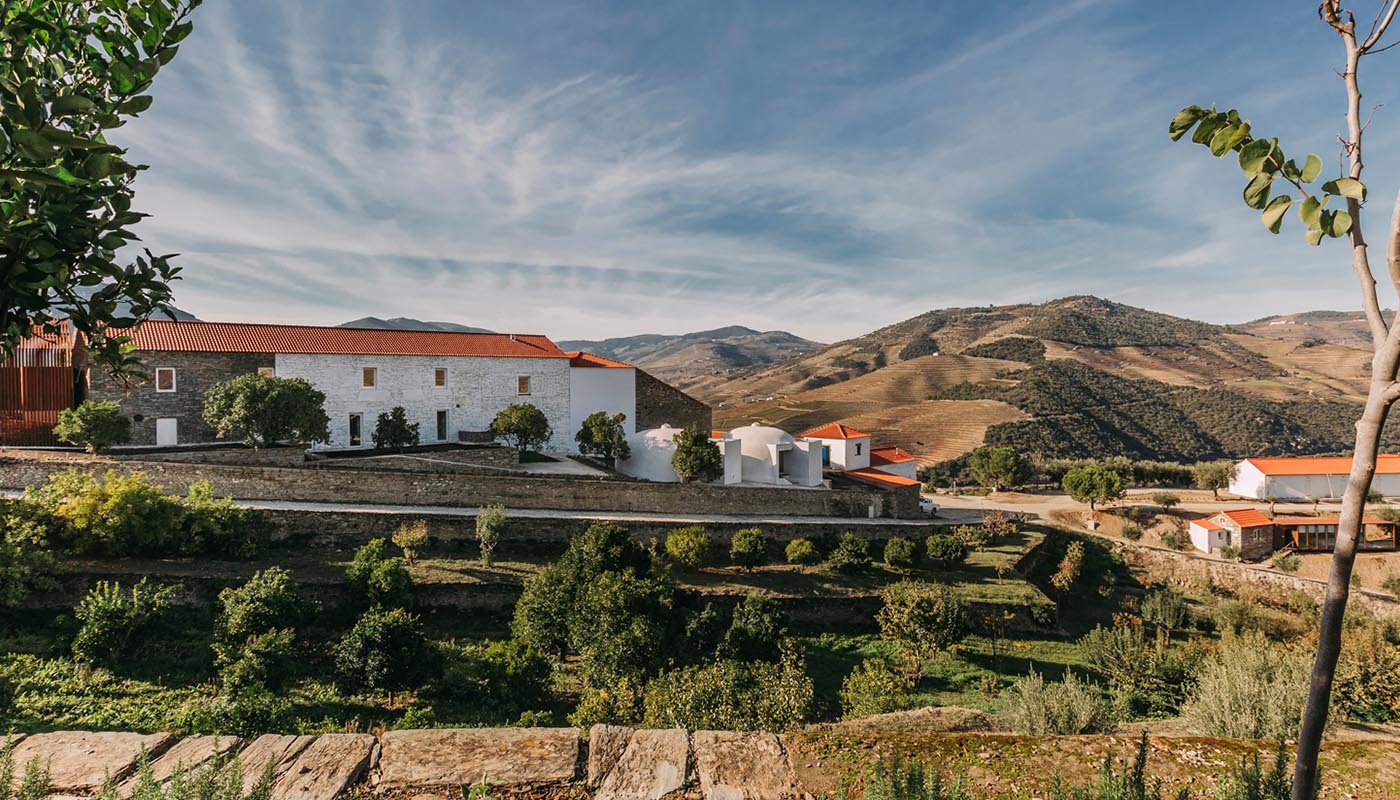
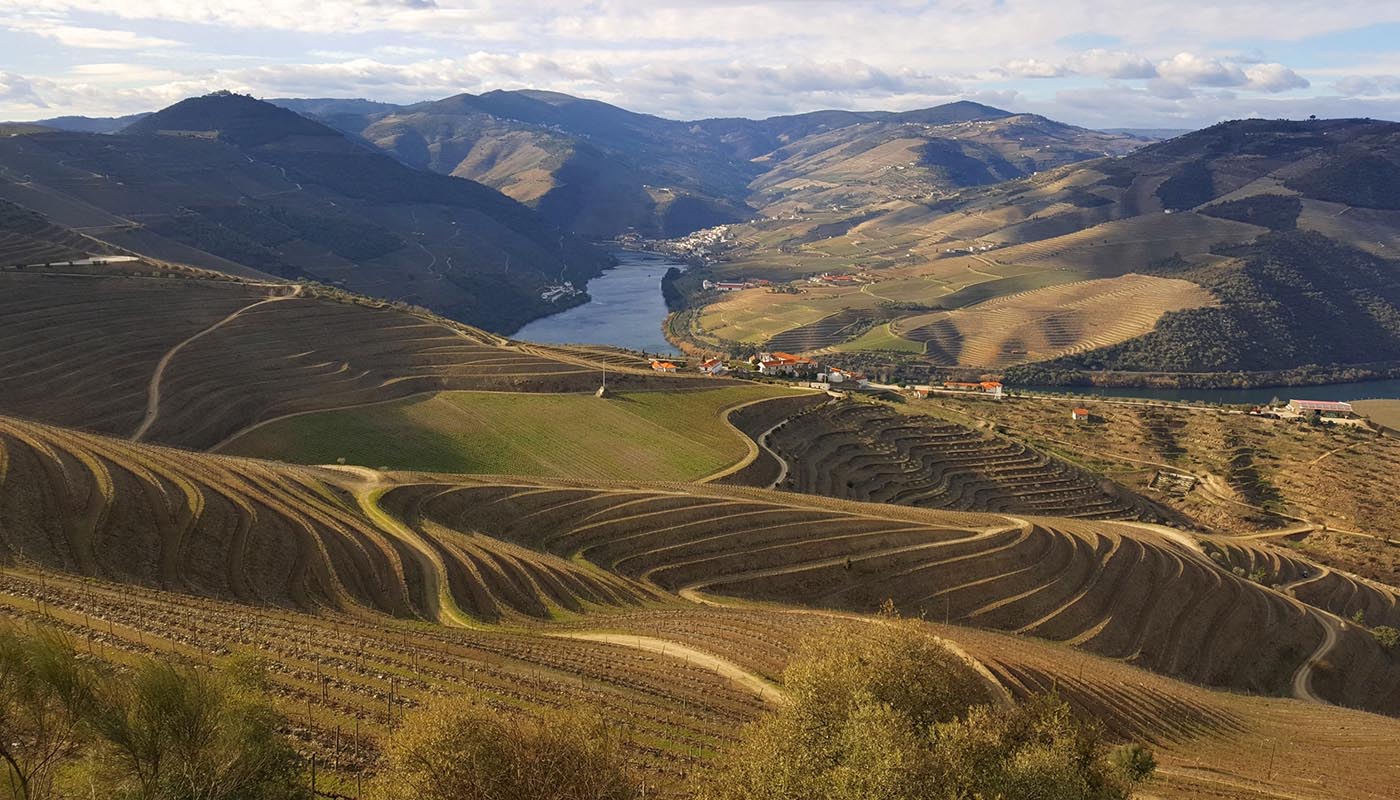
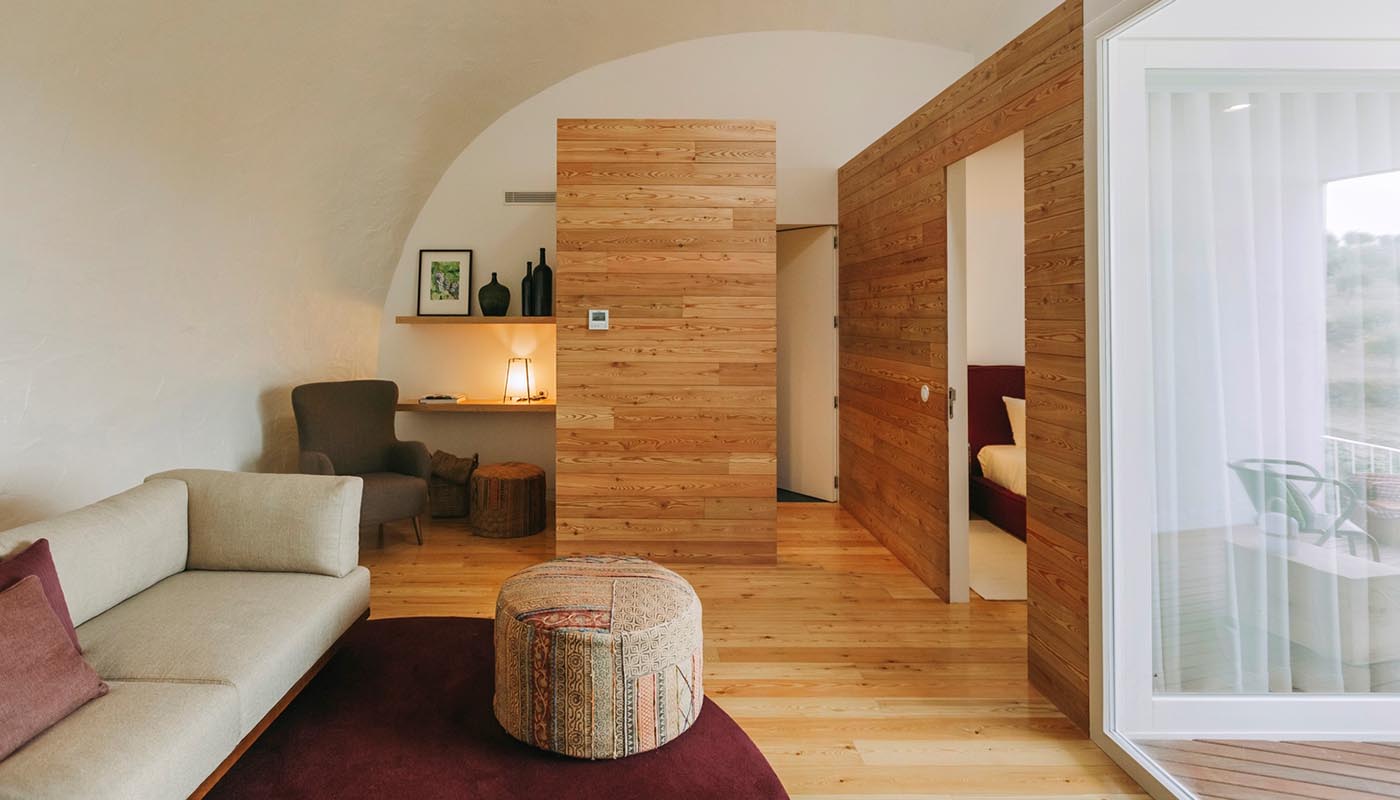

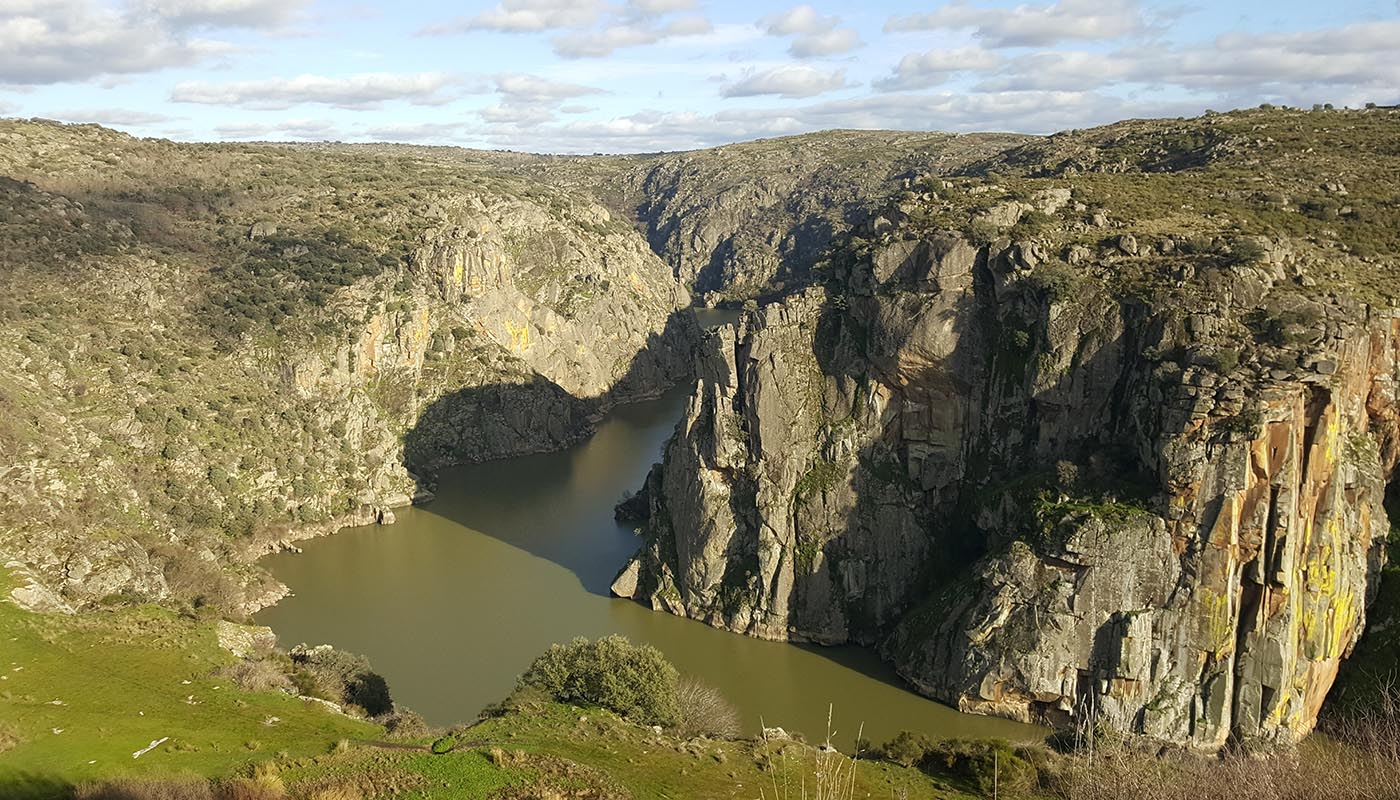
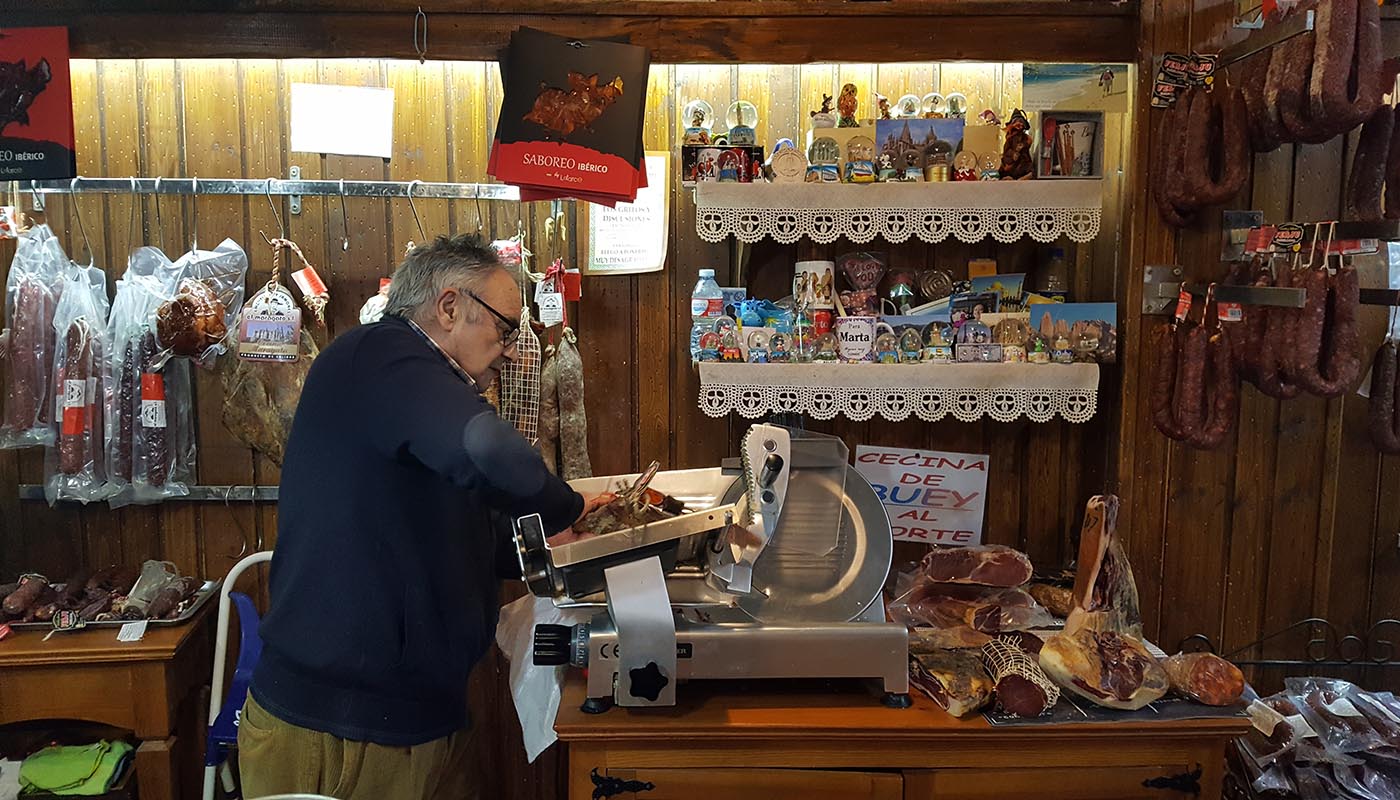

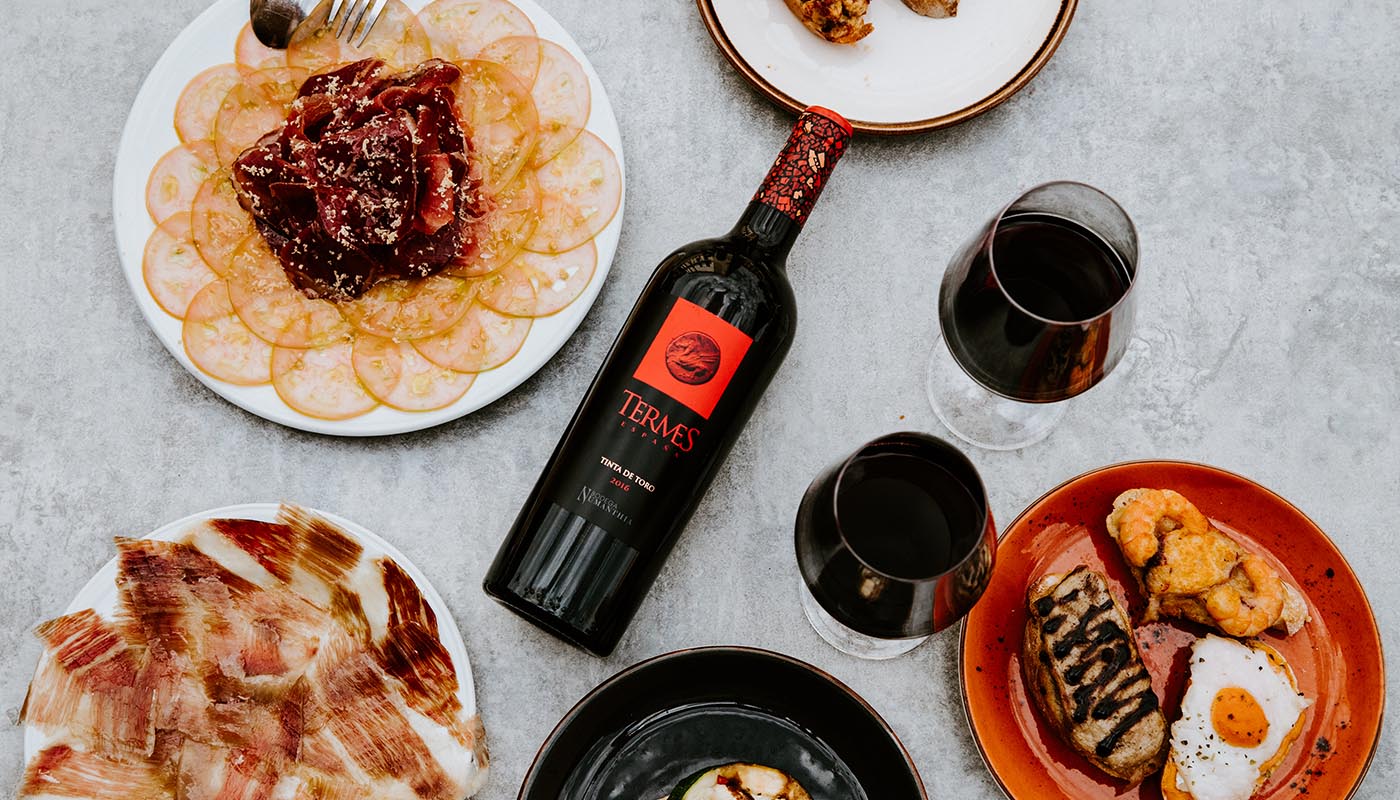
Your Itinerary
Day 1 | Segovia and its Cuisine with a Sense of Place
- Arrival in Segovia, one of Spain’s most alluring and charming cities, very much worth an overnight stay. It is just one hours’ drive from Madrid.
- Check into your hotel, and settle in. You will stay 1 night in a lovely 5-star boutique hotel located in the old town city centre. It is a 17th century former monastery cum manor house, graciously converted into a serene and chic boutique hotel. The location is quiet but convenient, with cafes, restaurants and memorable sights just a short walk away.
- Time to unwind and explore Segovia on your own.
- Dinner at one of the best restaurants in Segovia. This is a great traditional place, offering traditional Castilian cuisine with an imaginative twist. The service is classy, executed by traditional camareros (waiters). The wine list is extraordinary. You may sample some of Castillan’s signature dishes like delicious cochinillo (suckling pig), roasted in open faced brick ovens, combined with roasted asparagus. The food will be paired with the wines from two top wine estates, which are linked to the owners of the restaurant. Included are white wines from Segovian old Verdejo vines, fresh and aromatic. The red wines from a top estate in Ribera del Duero are velvety, with ripe cherry and plum fruit.
- This is a venue beloved by locals as well as Madrileños, who drive up to Segovia for dinner.
Day 2 | Forward-thinking Wine Making in Ribera del Duero
- After breakfast check out. Then drive deep into the heart of Ribera del Duero, one of the worlds’ classic red wine producing areas. It is a beautiful one-hour’s drive through fertile land dotted with medieval towns, castles and monasteries. The river Duero runs across the wine region and into Portugal, where it is called ‘’Douro’’. The defining features of Ribera del Duero as a wine region include altitude and varied soils, resulting in concentrated wines with ripe red fruit and velvety tannins.
- In central Ribera del Duero, close to wine town Peñafiel, you are expected for a tour of an exciting new winery, one of the regions’ very best. Your guide will highlight the uncommon history of this family owned estate, now recognized as an outstanding wine producer. The tour will cover different winemaking stages, focussing on the result rather than on the process: you will be able to taste different wines still maturing in barrels.
- At the end of the tour, you will try the signature wines of the winery on the terrace. Sipping wine while taking in the lovely vineyard views is delightful. The tour will be private or in a small group, with an expert guide. Lunch follows in the excellent restaurant of the house. The winery is connected to a long family tradition of restaurateurs that have reached the pinnacle of fine dining here. Refined versions of traditional Spanish dishes from various regions are served, the menu changing according to the season. One can expect delicious gazpachos, different cuts of local beef and lamb cooked to perfection. Desserts are mostly a selection of local pastries. The meal will be paired with the delicious estate wines.
- After lunch, a short drive to your delightful hotel for the night. Check-in, then enjoy some time for relaxation. You will stay in a wonderful 5-star hotel. It is a former medieval monastery recently renovated and refurbished with restraint. There is a great spa, and a wonderful restaurant too, a local reference point.
- Dinner on your own.
Day 3 | Biodiversity and Great Wines in a Medieval Setting
- After breakfast, check out of your hotel. Today’s journey will take you further into the Castilla y Leon plateau, into the Rueda wine region. It is a soothing and beautiful drive across undulating farmland where for centuries wine has been cultivated. The landscape, seemingly empty at first, will gradually reveal great castles and delightful small historic towns.
- Stop at a most remarkable winery for a tour, tasting and lunch. This is a former monastery dating back to the 15th century, in a wonderful setting among pastoral land, crop fields, patches of forest and old and new vineyards of Tempranillo, Syrah and Cabernet Sauvignon. While Rueda is deservedly famous for its clean and fresh wines made of Verdejo, here the focus is largely on making elegant red wines, with grapes organically farmed. This winery is fairly recent, dating to the beginning of the last century. However, its grounds have been in use since medieval times; ancient wine cellars are still visible, a 16th century chapel flamboyantly decorated offers many surprising delights.
- During a private tour you will learn about the genius loci and the clean but stunning renovation and conversion of the monastic facilities, overseen by a world class architect. After the tour an extensive tasting of the signature vintages, paired with delicious local finger food, tapas style.
- After lunch, a short and relaxing drive to Zamora, one of the most captivating Castilian cities, with an evocative location; the historic quarters are still walled, spreading from the top of a ridge down to the banks of the Duero river.
- Arrival in Zamora, with its beguiling old town, reminders of the glory days of old Castile. Check into your hotel in the heart of town. You will stay two nights in a beautiful Renaissance city palace converted into a 4- star boutique hotel. It is a special place with privileged grandeur; think grand salons invoking the rich past of Zamora, elegantly decorated with period furniture, large paintings and the odd suite of armour. After check in, free time to explore on your own. The old city with its lovely squares and gracious architecture is on your doorstep.
- Dinner will be at our favourite restaurant in town, a short walk from the hotel. This is a local place that perfectly embodies the Castilla y León region, through offering a welcoming, friendly atmosphere and traditional quality cuisine. Dishes are simple and yet delicious. The secret, if there is one, is the quality of the ingredients. From the dining room you can see the open kitchen and the delicious dishes coming out of it. Think of grilled chuleta de ternera (veal cutlet), wild setas (mushrooms) or pimientos del padrón (padron peppers) and, for dessert, a homemade sheep’s milk cheesecake. The chef will make sure to highlight the specials of the day.
Day 4 | Discover Toro’s Powerful, Full Bodied Red Wines
- After breakfast, a visit to one of the most exciting wine projects in the Toro wine region. Toro is a region steadily moving towards elite level like Rioja and Ribera del Duero. It is a short and easy drive from Zamora.
- Arrival at a top Toro winery, after a drive across the Castilian plateau, surrounded by mountains in the distance. You may note the Toro landscape feels austere; despite the extremes of climate here, with cold winters and hot summers, it may feel surprising to find vineyards in this location. However, we feel in the deep heart of this Toro wine region the Tinta de Toro grape varietal – a Tempranillo clone – finds its best expression. Vines seem to thrive under the harsh conditions, resulting in elegantly structured wines, commonly holding 15 percent of alcohol. These are wines which have a long aging potential.
- This is a prestigious project, owned by a family who run high end wineries in France. After a short talk about the purpose of this winery, there will be a private tour of the vineyards, winery and bodega facilities. A wine tasting experience will be paired with a tapas meal. After lunch return to Zamora, with more time to explore this enchanting town.
- Dinner on your own.
Day 5 | Artisanal Cheesemaking in Duero & Unwinding in Douro
- After breakfast, checkout of your hotel. Today there will be another beautiful drive, partly along the Duero river, into Portugal towards the Douro (Duero) Valley. Prior to driving into Portugal, first a stop at one of the best cheese producers of Castile, close to Zamora. Upon arrival you will be welcomed by one of the family members of this small cheese making business. He will be leading your private visit, starting with a quick tour of the sheep’s stable and milking parlour. Some salient details regarding the raising of the local Castilian sheep breed will be shared. The cheese making facilities are next, allowing you to see the different steps of production and aging of the Queso Zamorano. It is a delicate process, in line with time honoured traditions.
- After the tour, a tasting of the different aged Zamorano cheeses, from 7 to 16 months of age. Some “special” editions cheeses will also be offered at the tasting. After the tasting, depart for the Douro Valley in Portugal.
- Arrival and check in at the charming winery cum hotel in Douro. The hotel, a historic Quinta (manor house), is set on a large estate, views to the countryside and the Douro river are just splendid – this a fabulous place to appreciate the enormity and beauty of the Douro Valley. You will stay two nights at this small hotel. Here a respectful renovation combines a rustic touch with tasteful modern decoration.
- Free time to unwind after your drive and to enjoy the estate.
- Dinner at the quinta’s elegant restaurant. The menu changes according to the seasons, but you can always expect dishes to be prepared from some of the best local recipes, in tandem with a modern presentation. Dishes may include roasted veal with potatoes, grilled river fish, with side dishes that vary according to what is available in the vegetable garden. Dinner will be paired with the excellent wines from the estate – you are sojourning at a revered Douro wine producer.
Day 6 | Supple Modern Douro Wines from Classic Grapes
- After breakfast time to explore the Douro Valley. The drive to your next stop is breathtakingly beautiful, in particular when descending to the river banks.
- Arrival at an intimate highly rated winey, family owned. offering great wines and rustic charm. Here you will have a private (or small group) tour of the winery. A tasting will take place in a room with spectacular views of the Douro river. Lunch will be served at the winery’s restaurant, one of the best in the area. Dishes are refined and will be paired with the wines from this excellent estate.
- After lunch return to your hotel, with more time to explore the enchanting Douro surroundings. No program rest of the day.
Day 7 | Modern and Innovative Porto Cuisine along the Douro
- After breakfast, time to check-out and head to Porto. It is a lovely 2 hours’ drive. On your drive to Porto we might suggest a stop halfway at Amarante, a lovely market town. The small yet charming historic centre is really charming and if you would like lunch/snack, there are plenty local eating houses.
- Arrival in Porto, check in downtown hotel. You will stay one night in a stylish 5-star hotel in the heart of the charming and historic centre of Porto. It is set in a 16th century palace, attractively renovated. Public rooms and the inner courtyard are delightful. Bedrooms are spacious and imaginatively decorated; all are different, respecting the existing structure of the palace. Location is ideal for exploring Porto’s major monuments, and the town’s famous classic cafes and coffee houses. After check in, time day to explore charming Porto on your own.
- The farewell dinner will be held at one of our favourites. It’s also the perfect place for an aperitif in the restaurants’ garden with gorgeous views over city and river. You will dine on the chef’s daily changing tasting menu. Expect modern and innovative Portuguese cuisine, prepared with French inflected technique. Dishes are light and refined and may include monkfish with truffle and cacao, turbot fillet with lobster rice, duck confit with truffle purée and as desert, lime tart with marshmallow ice-cream. The menu will be served with matching Portuguese wines.
Day 8 | Conclusion
- After breakfast your tour ends.
Accommodation
Segovia
You will stay one night in a lovely 5-star boutique hotel located in the old town city centre. It is a 17th century former monastery cum manor house, graciously converted into a serene and chic boutique hotel. Rooms are decorated in a calm, classic style, with views over Segovia or the mountains. It offers all the amenities of a very good hotel.
There is an indoor pool and a small wellness centre. The location is quiet but convenient, with many memorable sights just a short walk away, like the Plaza Mayor square with its exuberant Cathedral.
Cafes, restaurants and authentic shopping areas are never far away.
Ribera del Duero
You will stay one night in a wonderful 5-star hotel. It is a former medieval monastery recently renovated and refurbished with restraint, exuding understated sophistication. Rooms are large, comfortable, restful and well appointed; bathrooms are modern, sleek and roomy.
If you choose to relax at the hotel, there is plenty to enjoy. Take a plunge in one of the indoor or outdoor swimming pools and enjoy the spa. Or have a glass of wine at the bar, whilst enjoying the splendid surroundings. You may wish to explore the beautiful architecture of the hotel: from the vaulted-groined ceilings, to the cloisters and church. If feeling a bit more adventurous you can take a walk through the hotel’s vineyards, or go for a bike ride along the Duero river. The hotel’s restaurant has become a local reference point.
We feel this is an exceptional place to sojourn. Its 5-stars stand for atmosphere, amenities, elegance, heritage and location – among vineyards close to banks of the river which lends its name to this great wine region.
Zamora
You will stay two nights in a beautiful Renaissance city palace converted into a 4- star boutique hotel. It exudes a subtle combination of privileged grandeur; think grand salons invoking the rich past of Zamora, elegantly decorated with period furniture, large paintings and the odd suite of armour.
Rooms are spacious, comfortable and calmly decorated in a classic Spanish way. There is also an open air swimming pool and a fine local bar – a nice place to have a platter of the delicious local cheese with a glass of wine from the area. The old city with its lovely squares and gracious architecture is on your doorstep.
Douro Valley
You will stay two nights, at a historic Quinta (manor house), fully renovated and refurbished. A respectful renovation combines a rustic touch with tasteful modern decoration. There are not many rooms, and all are different and spread around the buildings of the Quinta, all are very comfortable.
Setting is in the middle of the vineyards, and you can explore at leisure one of the many walking trails surrounding these. There is a lovely outdoor pool. The best way to appreciate the enormity and beauty of the Douro Valley is high on a mountain, with a view to the river. The location of your hotel will offer you that experience. Last but not least, your Quinta is one the most revered Douro wine producers.
Porto
You will stay one night in a stylish 5-star hotel in the heart of the charming and historic centre of Porto. It is set in a 16th century palace, attractively renovated. One feels special walking in, yet the atmosphere is not intimidating. Public rooms and the inner courtyard are delightful. Bedrooms are spacious and imaginatively decorated; all are different, respecting the existing structure of the palace. Location is in a pedestrian street; most of Porto’s major monuments, as well as the town’s famous classic cafes and coffee houses, are within walking distance.
How To Get There
It is easiest to fly into Madrid airport. The drive from Madrid to Segovia should take about 1 hour. If you prefer to take the train, there is a fast train connection from Madrid Chamartin station, the journey takes about 30 minutes. For your return flight, Porto airport is a convenient international hub. There are many direct flights to many cities in Europe, and the Americas.
In order to get to the various wineries taking part in the tour from day 2 to day 7, you may wish to rent a car or arrange for a private car service. Of course we would be happy to organize a bespoke car service or rent a car on your behalf. If you would like Paladares Travel to assist you, please let us know.
A 4 day’s exploration of innovative and classic gastronomy in enchanting Lisbon, and the best food and wine in rural and authentic Alentejo
Enjoy the signature flavours of enchanting Valencia and its up-and-coming Utiel-Requena wine region during a 4 day’s trip
Take the rustic route through Galicia to discover artisanal wines, ancient towns and exquisite landscapes in a place apart.
Taste the flavours of Santiago de Compostela and its adjacent wine region during a short break
